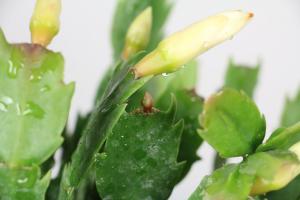How do Plants Absorb Water and Carbon Dioxide?
Plants are unique organisms that are able to generate their own food through the process of photosynthesis. The two primary elements required for this process are water and carbon dioxide, which the plant must absorb. So, how do plants absorb these necessary elements and what is the process involved?
Water Absorption
The process of water absorption is carried out by a plant's root system, which plays a crucial role in supplying the necessary water and minerals to the rest of the plant. The roots of the plant grow deep into the soil, where they are able to absorb water that is stored within the soil, along with the nutrients that are also present.
The roots themselves have a number of adaptations that help them efficiently absorb and transport water. For example, the roots are covered in tiny, hair-like structures called root hairs. These root hairs dramatically increase the surface area of the roots, which makes it easier for them to absorb water and dissolved nutrients from the surrounding soil.
Once the water has been absorbed by the roots, it is transported up to the leaves of the plant through a network of tubes called xylem. These tubes are made up of cells that are specially adapted to carry water and minerals from the roots to the rest of the plant.
Carbon Dioxide Absorption
Carbon dioxide is absorbed by a plant through small openings on the surface of its leaves called stomata. These stomata are found on the underside of the leaf and they are responsible for both the intake of carbon dioxide and the release of oxygen.
The process of carbon dioxide absorption occurs when the stomata open, allowing gas to enter the leaf. The carbon dioxide molecules diffuse from an area of high concentration (the air) to an area of low concentration (inside the leaf). Once inside the leaf, the carbon dioxide is used in photosynthesis to create sugars and other organic compounds that the plant needs for growth.
Photosynthesis
Photosynthesis is the process by which plants convert water and carbon dioxide into glucose (a type of sugar) and oxygen. This process is carried out in the chloroplasts, which are small organelles found within the cells of plant leaves.
The process of photosynthesis involves a series of chemical reactions, whereby the energy from sunlight is used to break apart the water molecules into hydrogen and oxygen. The hydrogen is then combined with the carbon dioxide to create glucose, which is the primary source of energy for the plant.
Conclusion
The ability of plants to absorb water and carbon dioxide is essential for their survival. Through a complex network of roots, xylem, and stomata, plants are able to efficiently transport these necessary elements throughout their entire structure. The process of photosynthesis then allows plants to create their own food, which is not only essential for their growth and survival, but also for the continued life of other organisms in the ecosystem.

 how many times do yo...
how many times do yo... how many planted tre...
how many planted tre... how many pine trees ...
how many pine trees ... how many pecan trees...
how many pecan trees... how many plants comp...
how many plants comp... how many plants can ...
how many plants can ... how many plants and ...
how many plants and ... how many pepper plan...
how many pepper plan...






























